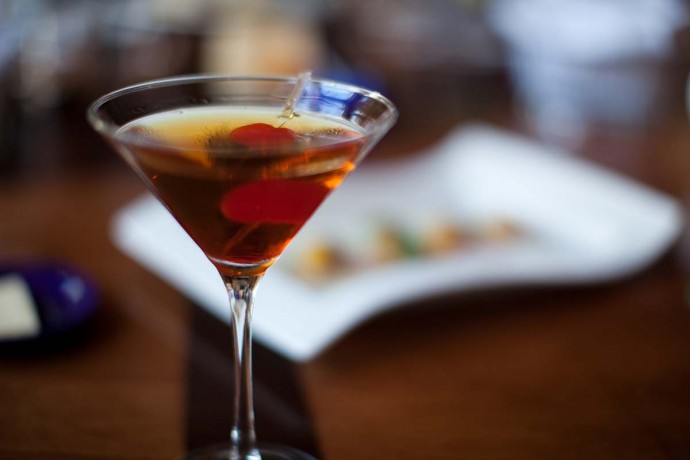The classic Manhattan is more than a cocktail. For many, it is the cocktail, the defining drink of American mixology that dates all the way back to the late 1800s (though we’re still pretty sure the Old-Fashioned takes the cake, if you want to get technical).
It’s simple, elegant, and overflowing with class—the perfect drink to round out a long day at the office or enjoy under candlelight with a loved one.
But despite its characteristic simplicity, choosing the right ingredients is essential when it comes to making a classic Manhattan properly.
There are endless combinations of rye, vermouth, and bitters that all lead to vastly different, often exceptional cocktails, and deciding which are just right for you is generally a matter of (fairly low-risk, in the grand scheme of things) trial and error.
In this guide, we’ll walk you through the ingredients and techniques you’ll need to make our favorite Manhattan, and beyond that, you’re more than welcome to experiment on your own.
Cocktail culture as we know it wouldn’t exist if it weren’t for all you enterprising iconoclasts—maybe your recipe will go on to become the gold standard by which all the rest of us are judged!
The Rye
Determining the best whiskey for a Manhattan is all a matter of personal taste, but what’s important no matter what you like is that you put some thought into it. This is the defining ingredient of the drink.
For decades, when rye was a scarce commodity, it was common to use bourbon in its place. This has a tendency to make an overly sweet concoction, though, and we can’t recommend it.
Our personal recommendation is to use Bulleit Rye or Rittenhouse Rye. They’re available in pretty much any liquor store these days, they’re affordable, and most importantly, they blend fantastically with the other ingredients.
The Sweet Vermouth
As we discuss in our piece on how to store vermouth, this is actually a pretty delicate ingredient, all things considered.
You don’t want to use a bottle that’s been sitting on your grandfather’s shelf since the fifties, and you should make sure you pick a brand that works well with your whiskey of choice. Rye has a somewhat spicy quality that can be hard to grapple with at times.
Through some experimentation of our own (it’s a rough job, but somebody’s gotta do it), we settled on two bottles of sweet vermouth that can do no wrong: Noilly Prat Rouge and Carpano Antica.
They make fairly different drinks—a relatively sweeter one with the Noilly Prat, and a more complex, layered affair with the Carpano Antica—but both are excellent.
The Bitters
We’re the first to admit that we can be a little boring in the bitters department, as (at least when making a drink for the first time) we almost always come back to our mainstay of Angostura.
Feel free to mix it up with orange or other flavored bitters, but we’d suggest giving it a try with the classic stuff at least once to get a baseline.
The Garnish
The garnish on a Manhattan is a contentious subject. Some people like to use a maraschino cherry, others a twist of orange peel, and a few even throw them both on there for good measure.
We tend to go back and forth. Usually, we can’t be bothered with the extra effort and forgo the garnish altogether. When we can be bothered, though, we almost always go with an orange twist for the little bit of aromatic essential oils on the surface.
But if there’s a jar of nice Luxardo cherries sitting around, we’re goners. We’ll pop one into the bottom of the glass and spend the next hour eating the rest with our bare hands.
Photo: Dave Nakayama



